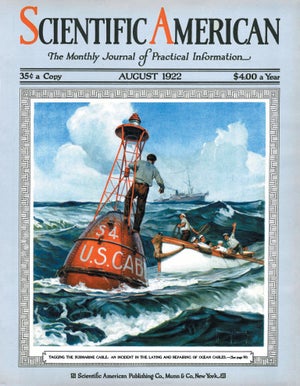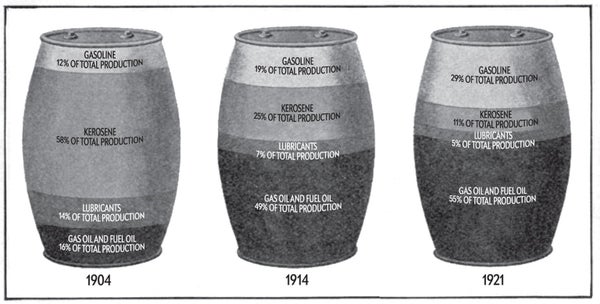1972

Credit: Scientific American, August 1972
Creation Science
On supporting science journalism
If you're enjoying this article, consider supporting our award-winning journalism by subscribing. By purchasing a subscription you are helping to ensure the future of impactful stories about the discoveries and ideas shaping our world today.
“The stage is being set for the mandatory teaching of divine creation as a scientific theory on the same footing as evolution in the public schools of California. In 1969 the State Board of Education modified a new ‘science framework’ for kindergarten through the 12th grade to require that recommended textbooks present more than one hypothesis for the origin of the universe, matter, life and man. The guidelines make it clear that the other hypothesis is to be creation.”
1922

Credit: Scientific American, August 1922
Topographers Hike a Lot
“Last year a good many of the keen-eyed engineers and their assistants making maps for the United States Geological Survey covered 12,311 square miles of territory, making the total mapped since the work began in 1879 equal to 43 percent of the country, exclusive of Alaska: 1,301,136 square miles. The engineers are estimated to have tramped an aggregate of approximately nine million miles, for the average amount of walking varies, from five miles for every square mile surveyed in ordinary country to ten or more miles in rough country.”
Locomotive Rings True
“A piano seems out of place in a locomotive workshop, yet there is no better way of discovering cracks and defects in the parts of locomotive machinery than by striking the metal with a hammer and comparing the noise of the vibrations with piano notes. If the metal rings harmoniously with the piano note, all is well; the least flaw will result in a discord. Defects that are hardly noticed by the ordinary method of hammering are at once evident when the piano test is employed. A locomotive that rings true all over is certainly fit for service.”
Mount Everest, Almost
“A few days ago the cables published a dispatch from General C. G. Bruce. It reads: ‘Three members of the Everest expedition, Mallory, Somerville and Norton, on May 21 reached an altitude of 26,800 feet, the highest ever reached by man, and just 2,200 feet below the summit. To have got so far in a climb which was merely a kind of preliminary reconnaissance is a very fine achievement and seems to augur well for the final effort.’ The London Times notes, ‘The prospect of reaching the summit seems now much less a forlorn hope than it did.’”
During a subsequent 1924 attempt to scale the peak, George Mallory and his partner, Andrew Irvine, disappeared, last seen less than 1,000 feet from the summit. Mallory's body was not found until 1999.
1872

Credit: Scientific American, August 1872
Electric Lighthouses
“The following are the electric lights in England and France with the dates they were erected: Dungeness, January 1862; Cape La Heve, France, South Light, December 1863, North Light, November 1866; Cape Grisnez, France, February 1869; Souter Point, England, January 1871; South Foreland, England, January 1872. It is interesting to see, says Nature, that England took the lead in adaptation of electric illumination to lighthouse purposes. (We believe that in the United States there is no lighthouse in which the electric light is employed.)”
Acorn Elegance
“An acorn suspended by a piece of thread within half an inch of the surface of water in a hyacinth glass will, in a few months, burst and throw a root down into the water and shoot upwards its straight and tapering stem, with beautiful little green leaves. A young oak tree, growing in this way on the mantelshelf, is a very elegant and interesting object.”
Mineral Water Inquiry
“It would be a most desirable study for a physician of experience to tour our most renowned mineral waters, and to accurately ascertain their real merits. Most of the published descriptions are by proprietors, hotel keepers, or those in their interest, who are only concerned to brag as loudly as possible about the virtues of particular sources. Certain it is that the prolonged use of any mineral water in health or disease is of doubtful efficacy.”
